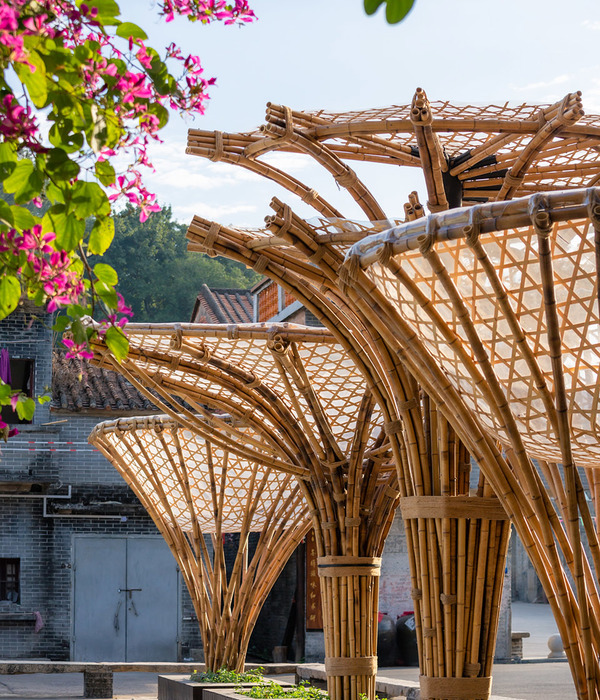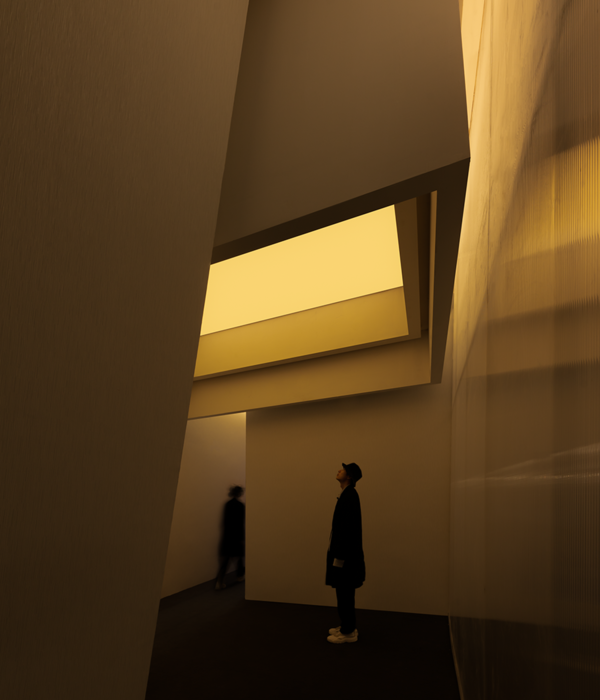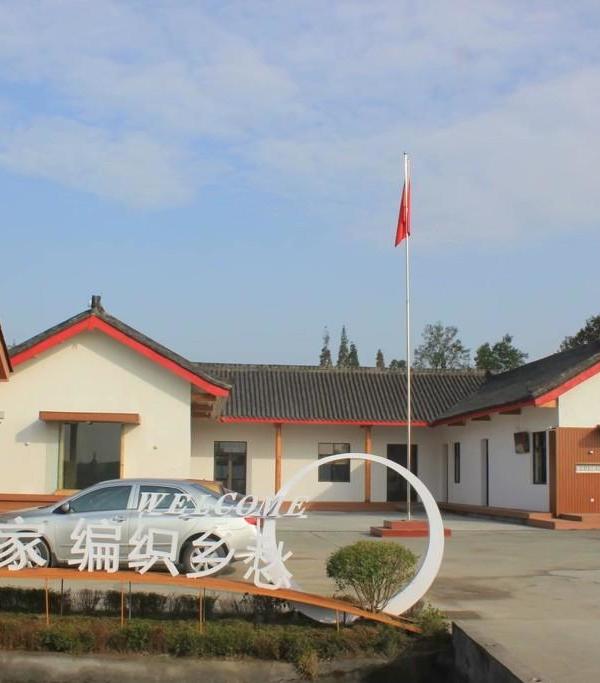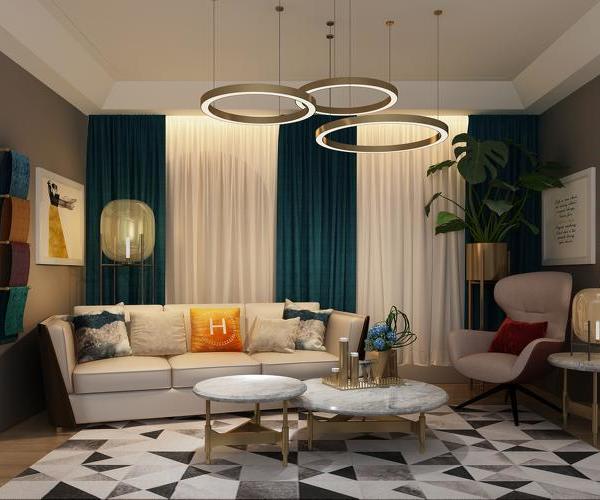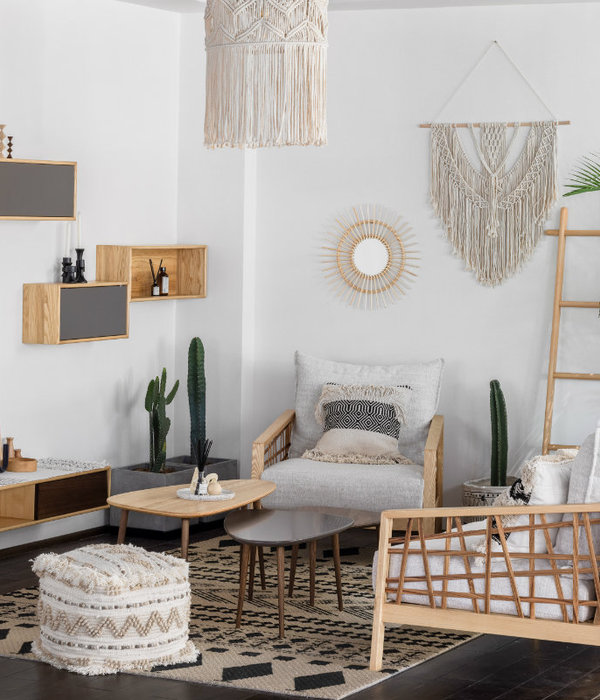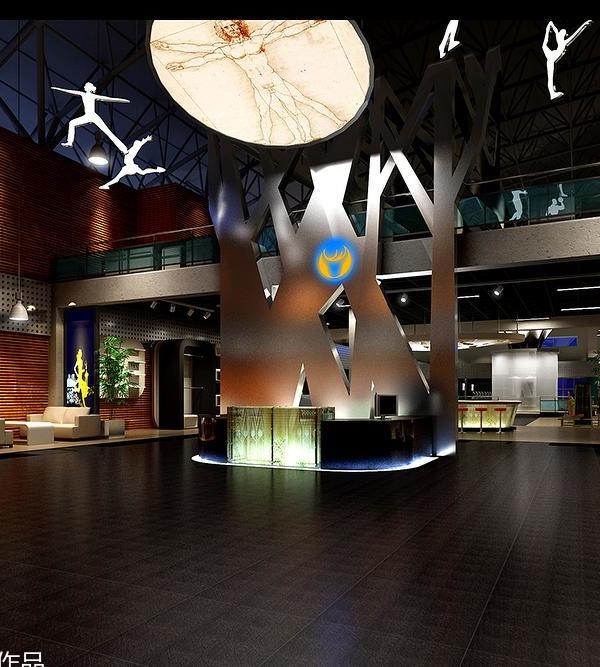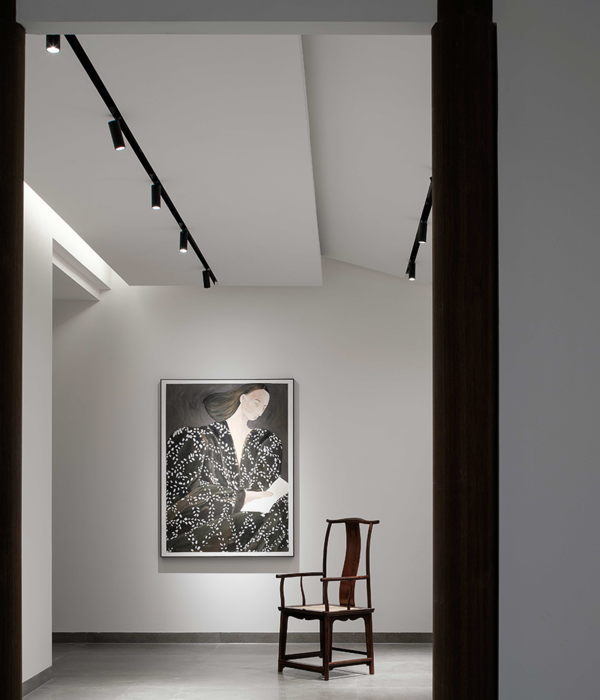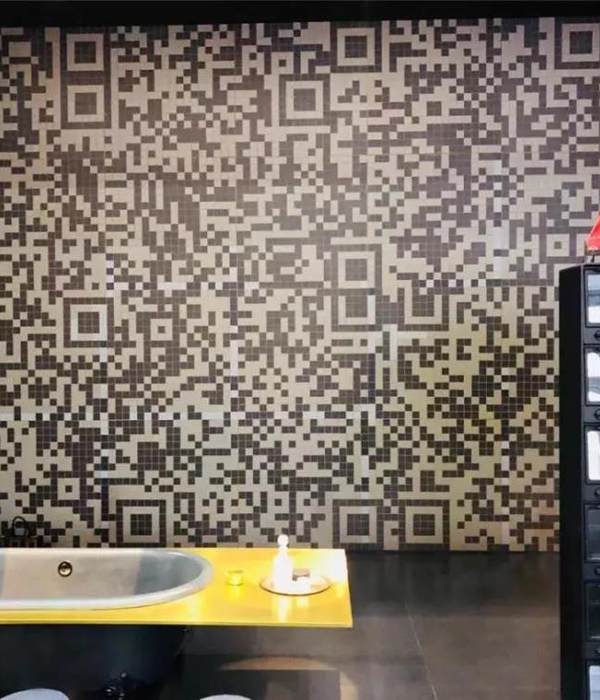这家银行曾经发生过一场抢劫,许多人被扣为人质,成为了斯德哥尔摩综合症的来源。银行关闭后,建筑经历了数年改造更迭,遮掩了其原本新古典主义的特点。
This former bank suffered a robbery in which hostages were taken, leading to the term Stockholm syndrome. After the bank closed, several interventions added a series of layers over the years, masking the original neoclassic architecture.
▼商店外观 external view of the store ©José Hevia
项目清理了整个空间,仅留下了必要的部分。尽管地面由真正的大理石制成,建筑中很多其他元素都采用人造石材,项目便利用了这种两面性。所有表皮保留原本Ekeberg大理石的单一色调。
The project cleans up the space, leaving only the essential features. Although the floors were made of real marble, many elements were faux marble, and the project plays with this duality. All the skin surfaces are monochrome within the shades of the original Ekeberg marble.
▼空间概览 overall view of the space ©José Hevia
▼大理石表面 surfaces made of marble ©José Hevia
三个通过柱子连接的房间和主轴尽端抽象的柱廊形成空间的新背景。假柱廊由真的大理石制成,形成通往试衣间的入口。
There are three rooms connected to each other through columns, and, at the end of the main axis, a new abstract colonnade creates a new background. This fake colonnade is made of real marble and provides access to the fitting rooms.
▼柱子连接的房间,背景为抽象的柱廊 rooms connected by columns with abstract colonnade as background ©José Hevia
▼假柱廊后为更衣间 fitting rooms behind the fake colonnade ©José Hevia
由Max Lamb制作的大理石家具在旧地面上创造了一层新的大理石地坪,形成展台。由Benoit Lalloz设计的灯具锐利而富有科技感,与大理石材料相平衡。
Pieces of marble furniture by Max Lamb work as podiums while creating a new marble floor on top of the old one. As a counterpoint, the light, designed by Benoit Lalloz, is technical and sharp.
▼大理石家具 furniture made of marble ©José Hevia
▼富有科技感的灯具与大理石相平衡 technical light balancing the marble space ©José Hevia
▼平面图 plan ©ARQUITECTURA-G
Photography: José Hevia
{{item.text_origin}}

